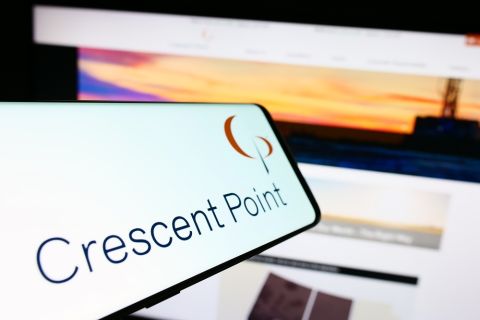
Approved in March, the rule was stayed, or put on hold, by the SEC in April pending the outcome of legal challenges. But the controversial rule remains a hot topic on C-suite agendas as companies gear up to comply and get more clarity. (Source: Shutterstock)
Do a little digging for oil and gas companies’ voluntarily disclosed emissions efforts and a clear picture emerges of companies with goals, plans and, to varying degrees, successes.
Enter the U.S. Securities and Exchange Commission’s (SEC) so-called climate disclosure rule—which requires companies to report Scope 1 and 2 emissions, weather-related risks and other climate-related data that could have a material business impact.
The new rule could have unintended consequences, according to experts speaking at a recent KPMG energy conference.
“That is to chill some of the voluntary disclosures that companies are currently making,” said Joel Smith, partner and audit sector leader for oil and gas at KPMG. Companies are making their compliance and other efforts known. “And if it’s extraneous to what [is in] the SEC rule, it might come out.”
Why report on something, after all, if the SEC doesn’t care?
“So, it could have a chilling effect,” Smith said.
Approved in March, the rule was stayed, or put on hold, by the SEC in April pending the outcome of legal challenges. But the controversial rule remains a hot topic on C-suite agendas as companies gear up to comply and get more clarity.
The regulation requires companies to report in their registration statements and annual reports information about greenhouse-gas emissions, potential weather impacts and other climate-related information that could have a material business impact.
“A matter is material if there is a substantial likelihood that a reasonable investor would consider it important when determining whether to buy or sell securities or how to vote or such a reasonable investor would view omission of the disclosure as having significantly altered the total mix of information made available,” according to the SEC.
For larger companies, reporting requirements include Scope 1 emissions, which are emissions a company produces from its own operations, and Scope 2 emissions, which are indirect emissions associated with the purchase of electricity, steam, heat or cooling—if they are considered material.
According to the U.S. Environmental Protection Agency, Scope 2 emissions result from a company’s use and physically occur at the facility where they are generated.
Full steam ahead?
The rules are intended to show to investors how companies are strategically thinking about climate risks on their businesses and potential opportunities to holistically form a story, said Maura Hodge, U.S. sustainability reporting leader for KPMG.
“While these rules may be imperfect and may feel like they’re asking for information that is just a burden,” Hodge said. “It’s actually really about how do we flip that and think [about] how do we actually use this information to tell a holistic story that connects our financial information and our financial investments to the overall risks and opportunities we are experiencing?”
The rule is currently paused, and all litigation has been consolidated into the 8th Circuit Court of Appeals. A decision will likely not be made until early next year, Hodge said.
Still, “we know what the SEC is looking for, and we have stake in the ground in terms of what we’re trying to move towards. … My clients [are] still saying it’s full steam ahead in terms of understanding the rule, understanding how we need to deal with it and what we need to do,” Hodge said.
Most companies are evaluating how their teams are organized, how systems are used and where information comes from, Smith said. They are also thinking about how information gathered could flow through systems such as those used for compliance with the Sarbanes-Oxley (SOX) Act for financial reporting, auditing and information security requirements.
“We’ve seen some companies that are wait-and-see from a compliance perspective, [and] others that are changing their business model to deal with some elements of the energy transition,” Smith said.
He added, “Many are already voluntarily disclosing lots of information, but maybe they don’t yet have SOX-like controls around that. … When are we going to implement hard controls that are testable, repeatable and so forth? I think the stay and all the litigation has put a bit of a pause on that.”
Meanwhile, the industry awaits clarity on the rule’s effective date and other unknowns.
Lingering concerns
This is not the first time the SEC has issued a stay on their rules due to litigation, according to Erin McCloskey, partner in KPMG’s department of professional practice. It happened in 2010 and 2019. In both instances, the rules were vacated by the court after taking about nine to 15 months to move through the legal system, she said.
“In those other two instances, there were circumstances where only portions of the rules were challenged in the litigation and the other portions did continue and go effective,” McCloskey said. “There were circumstances where they went effective after the litigation, but in that particular circumstance as well, the SEC had stayed the compliance and the effective dates, and here they’ve only stayed the effective dates, is my understanding. There is still possibility that the compliance dates are going to go effective.”
McCloskey said questions have arisen as a result: What does it mean if the rule is not effective? How can a company determine a compliance date?
Added to that are the chances that some parts of the rule may be vacated while others are enacted, she said.
Other lingering concerns include what is considered a severe weather event? Companies are required to identify such events and their impact on the business.
“How do you know in West Texas if it’s a particularly hot summer or a particularly frigid winter? How do you know if storm activity in the Gulf of Mexico in the summer or in the North Sea is a severe weather event?” asked Smith. For the SEC, it may be “I can’t define it, but I know it when I see it. … When you start getting into the details of where these companies are operating, what they’re doing and how subject they are to all weather conditions, it’s going to be difficult to nail that down.”
Materiality lens
The rule, which was several years in the making, was written to be legally durable, according to Todd Fowler, partner and audit sector leader of power and utilities for KPMG.
“I do think there’s an acknowledgment there that it will stand,” he said, adding the rule was written in a way that portions of the rule could survive challenges while others would not. “So, I think from an industry lens perspective, people have not slowed down in terms of their implementation or preparation for the rule. I wouldn’t say they’re full steam ahead.”
However, there is a forward-moving workstream toward compliance, he said.
Like Smith, other panelists had concerns about the rule’s potential unintended consequences.
The SEC is taking note of everything that’s put into the public space about companies, McCloskey said.
“And they will review earnings release transcripts. They will take a look at your press releases, and they will look at your company website—anything that the company is disclosing,” she said. “If they believe it is something that the company is talking about or focused on, they’re going to say, ‘Hey, why isn’t that in your 10-K?’”
In preparation for the rule, Hodge said KPMG recommends that companies understand what information is available and run it through the lens of SEC materiality.
“I can guarantee you there are probably some legal folks in the room here. The lawyers don’t want stuff to go into the 10-K. Right? But then it is likely you will get the [SEC] comment saying, ‘Well, why isn’t it here, if it’s material?’ And so, we’ve got to have an answer that’s supportable and reasonable."
Recommended Reading
Ithaca Energy to Buy Eni's UK Assets in $938MM North Sea Deal
2024-04-23 - Eni, one of Italy's biggest energy companies, will transfer its U.K. business in exchange for 38.5% of Ithaca's share capital, while the existing Ithaca Energy shareholders will own the remaining 61.5% of the combined group.
Triangle Energy, JV Set to Drill in North Perth Basin
2024-04-18 - The Booth-1 prospect is planned to be the first well in the joint venture’s —Triangle Energy, Strike Energy and New Zealand Oil and Gas — upcoming drilling campaign.
EIG’s MidOcean Closes Purchase of 20% Stake in Peru LNG
2024-04-23 - MidOcean Energy’s deal for SK Earthon’s Peru LNG follows a March deal to purchase Tokyo Gas’ LNG interests in Australia.
Equinor Acquires Stake in Standard Lithium Smackover Projects
2024-05-08 - Equinor’s transaction, completed effective May 7, includes interests in Standard Lithium’s flagship South West Arkansas Project and East Texas properties.
Crescent Point Divests Non-core Saskatchewan Assets to Saturn Oil & Gas
2024-05-07 - Crescent Point Energy is divesting non-core assets to boost its portfolio for long-term sustainability and repay debt.





